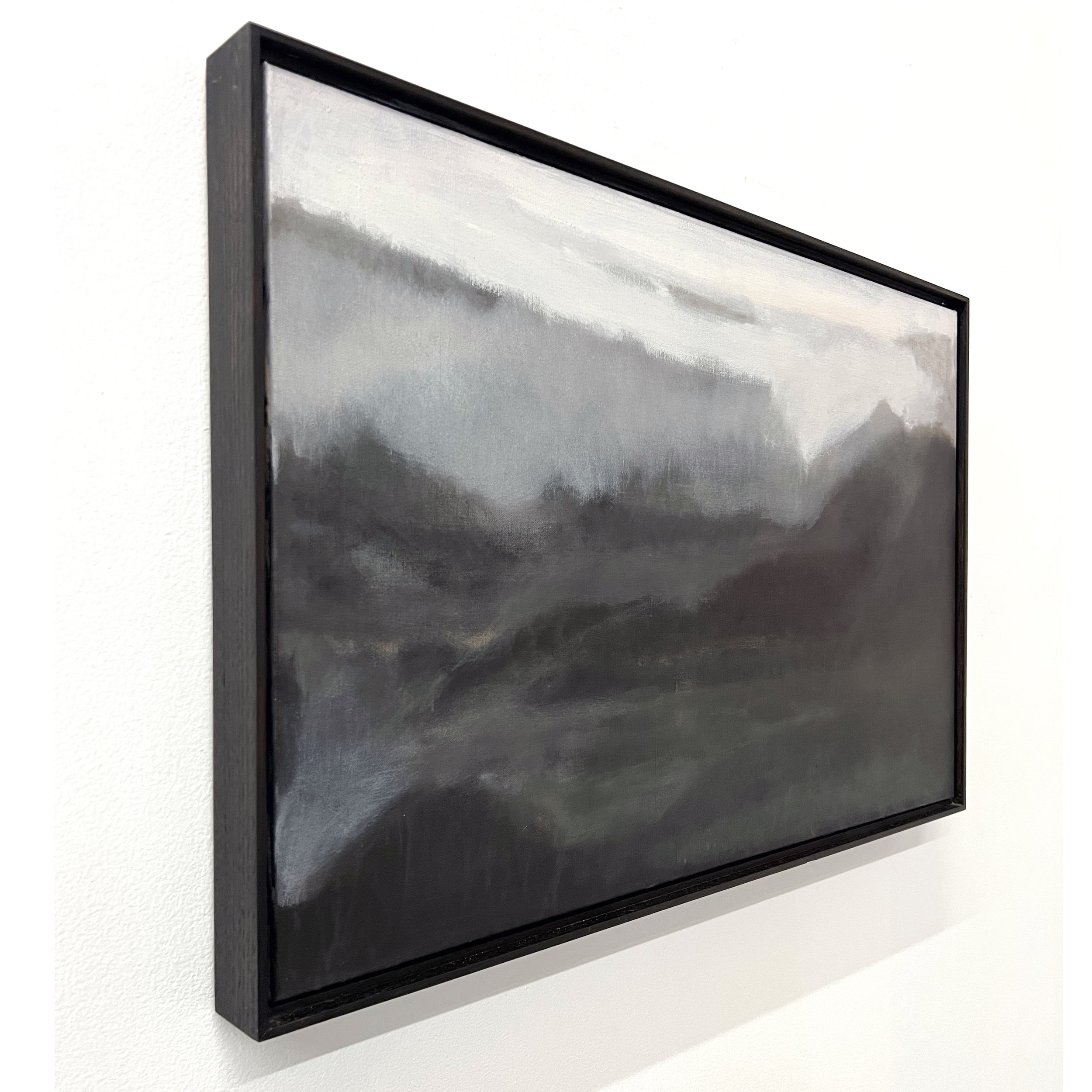
V16 Nature Nurture
GREG WOOD
V16 Nature Nurture, 2023
oil on linen, walnut frame
25 x 30 cm (canvas size)
SOLD

Additional Info
Stockroom Kyneton, Gallery One
03 February / 10 March 2024
GREG WOOD
Nature Nurture
Greg Wood is a painter of the earthy and ethereal. The observation of atmospheric shifts in landscapes has been central to his practice for the past 25 years. He is attracted to observing the dynamic and subtle states of transformation enhanced by changing conditions, weather, and light.
In a recent residency in the ex-mining town of Queenstown, West coast of Tasmania, Wood observed and created a series he describes as ‘resurrected landscapes’, images of places altered by human activity and in the process of regeneration. He describes these landscapes as occupying a liminal space between abstraction and realism reminiscent of his style, that is, the physical abstraction wrought by human intervention and the shifting forces of atmosphere in the environment and the realism of nature’s capacity for remodeling itself as it heals. He describes the act of painting these wounded landscapes as acts of restitution and contrition.
Wood currently resides in one such landscape, the Central Victorian Goldfields, on Dja Dja Wurrung country. Described by local indigenous people as ‘Upside down country’ after the disruptions of the gold rush, this deeply disfigured landscape, marred and churned by mining, is in the process of reconfiguring. This singular landscape, with its saturated coppery hues and shadowy crenulations, impels Wood to create works that hold the unsettled beauty of a place both devastated and re-emerging. It is in this way that his art bears witness to the immense power of nature’s capacity for adaptation and repair.
For Wood, the specifics of place are not as important as the emotional and figural afterimages that endure. He paints places traversed through sensory impression, inviting the viewer to enter the felt sense of place, inciting flares of memory and emotion – landscapes of the familiar and unfamiliar. Wood describes his work as a ‘slow release’ –the nuance of his paintings gradually revealing themselves to the viewer. The art of Melbourne tonalist Clarice Beckett has been a formative influence for him, as revealed in his translucent, gestural layers of muted colour, flattened form, merging tones, and diffuse light.







